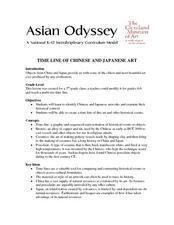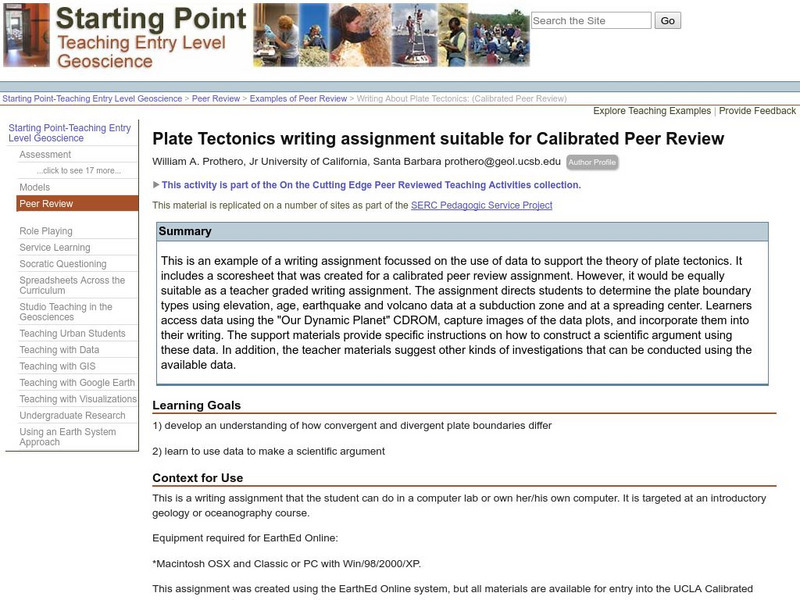Curated OER
Modifying an HTML Document
Learners make changes in HTML documents by re-opening workspace for their web pages, using the text editor, and reloading document in web browser to see changes.
Curated OER
Time Line Of Chinese And Japanese Art
Students create individual time lines placing various works of Asian art into chronological order. The information gathered is used to create one class time line for display.
Curated OER
Malia
Fourth graders begin their examination of the Hawaiian Islands. Using their island bookmarks from a previous lesson, they work together to put the information into a book. They identify the physical and human characteristics of the...
TeachEngineering
Teach Engineering: Volcanic Panic!
Students learn about the causes, composition and types of volcanoes. They begin with an overview of the Earth's interior and how volcanoes form. Once students know about how a volcano functions, they learn how engineers predict...
Climate Literacy
Clean: Mt. Pinatubo and the Atmosphere
This lesson explores the impact of volcanic eruptions on the atmosphere. Students will analyze three types of visual information: a graph of aerosol optical depth v. global temperature, a global map with temperature anomalies, and an ash...
PBS
Pbs Teachers: Scientific American: Science in Paradise: Paradise Postponed
Research the eruption of the Soufriere Hills volcano that devastated the island of Montserrat, and create a mini volcano using the chemical reaction caused by mixing baking soda and vinegar.
Science Education Resource Center at Carleton College
Serc: Geo Logic: Volcanologists
With the help of GEOLogic puzzles, students are asked to resolve how many days each of several volcanologists spent at a volcano and what day they started for the volcano.
American Geosciences Institute
American Geosciences Institute: Earth Science Week: Predict the Flow
Using a common modeling compound, students form a "volcano" and examine its topography to predict which way lava will flow down its slopes.
Science Education Resource Center at Carleton College
Serc: Igneous Rocks Model
Students use samples of four different types of igneous rocks to observe differences in texture, color, and grain size, and then make inferences about the relative cooling histories and silica content associated with each magma type.
Science Education Resource Center at Carleton College
Serc: A Data Rich Exercise for Discovering Plate Boundary Processes
This article in the Journal of Geoscience Education describes a classroom exercise based on four world maps containing earthquake, volcano, topographical and seafloor age data. Young scholars participate in this exercise by using a...
Science Education Resource Center at Carleton College
Serc: Writing About Plate Tectonics
This lesson is a writing assignment focussed on the use of data to support the theory of plate tectonics. It includes a scoresheet that was created for a calibrated peer review assignment. The assignment directs students to determine the...
TeachEngineering
Teach Engineering: Naturally Disastrous
Students are introduced to natural disasters, and learn the difference between natural hazards and natural disasters. They discover the many types of natural hazards - avalanche, earthquake, flood, forest fire, hurricane, landslide,...
PBS
Pbs Teachers:nordic Sagas: Island Life
Explore how life invades, colonizes and changes over time. Model a shallow underwater volcano to see what type of island forms, investigate seed dispersal methods and describe how wing size and shape determine which birds fly where.
Other popular searches
- Three Types of Volcanoes
- 3 Types of Volcanoes
- Different Types of Volcanoes
- 4 Types of Volcanoes
- Volcanoes Types













